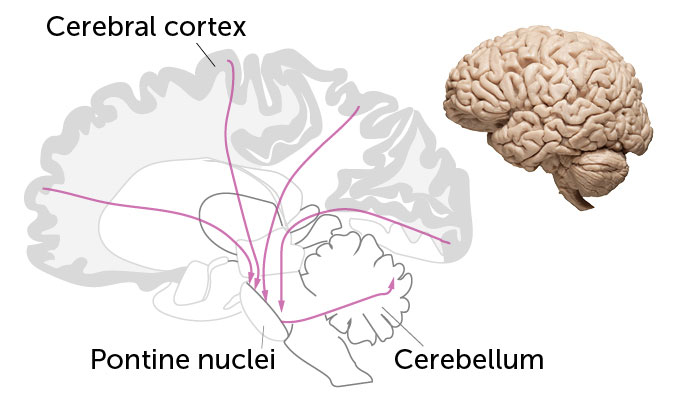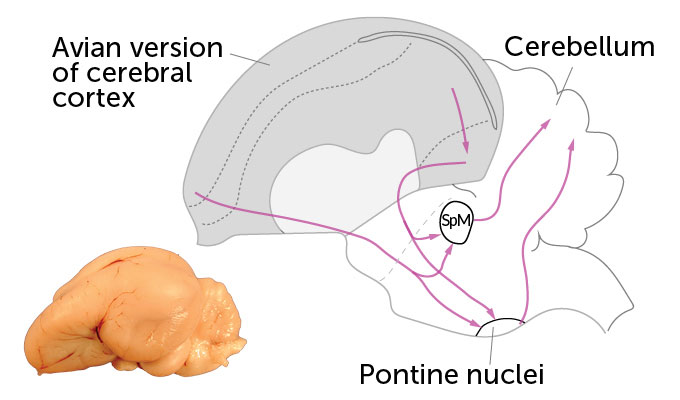Parrots may offer clues to how our intelligence evolved
Like people, the brainy birds can use tools, solve puzzles, speak words and more
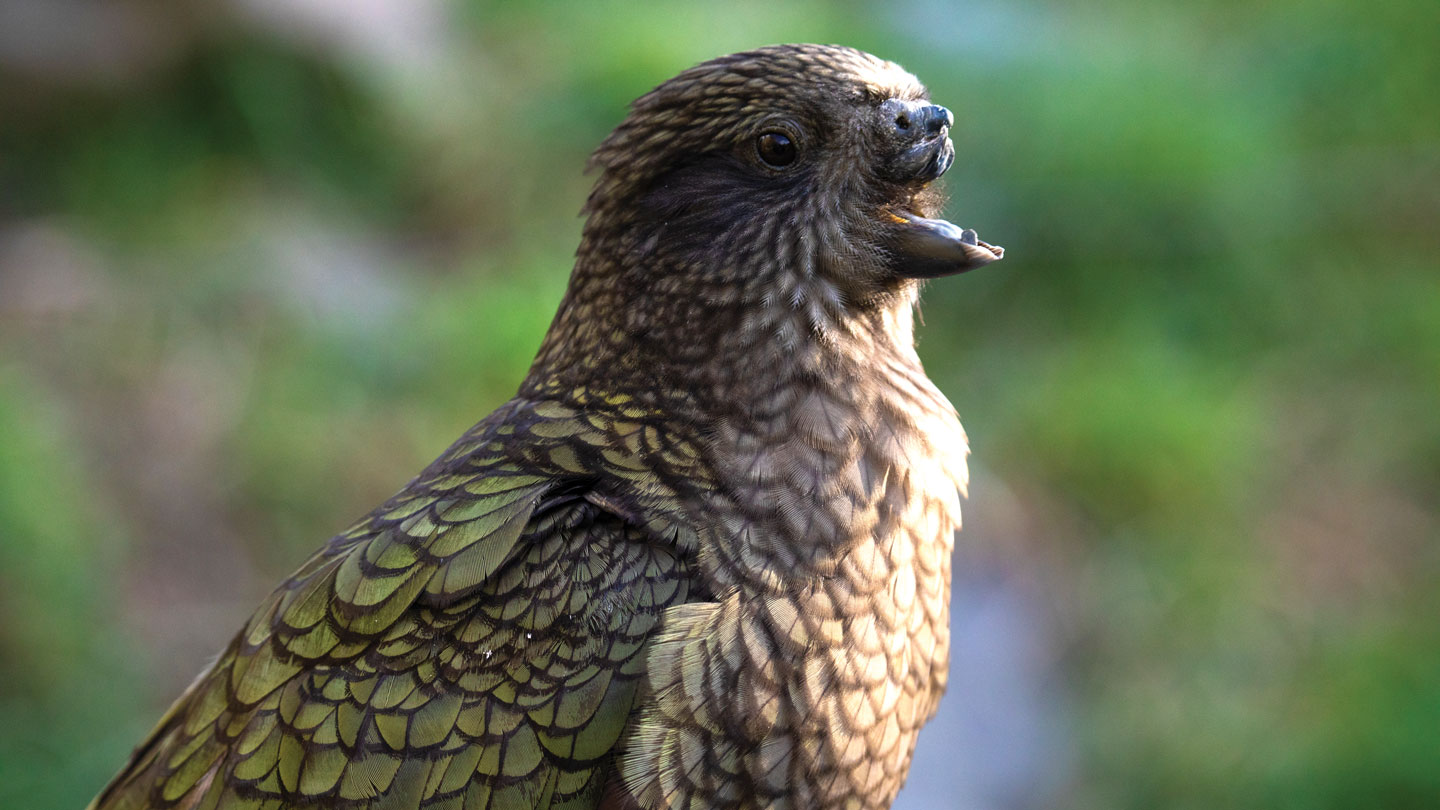
Bruce the kea is missing the top half of his beak. To compensate, the New Zealand parrot figured out a way to turn pebbles into novel tools — ones with which he could clean his feathers.
Patrick Wood
Bruce the kea is missing his upper beak. This makes the olive green parrot look a little like he’s always surprised. But scientists are even more shocked at what he can do in spite of his injury.
Bruce has been missing the upper part of his beak since at least 2012. That’s when he was rescued as a fledgling. This young bird, just at the age he was learning to fly, went to live at the Willowbank Wildlife Reserve in Christchurch. That’s in southern New Zealand.
Long, sharp beaks help keas rip plant roots out of the ground and pry insects out of rotten logs. Bruce’s injured beak means he couldn’t forage on his own. Bruce also shouldn’t be able to keep his feathers clean. Normally these birds use their beaks to preen. But zookeepers noticed that Bruce had figured out how to preen by using small stones.
First, he looks for his tool among pointy pebbles. He then rolls a few rocks around in his mouth with his tongue until he finds one that he likes. He holds the chosen pebble between his tongue and lower beak to then pick through his feathers.
This behavior didn’t come from the wild. When Bruce arrived at Willowbank, he was too young to have learned how to preen. And no other bird in the aviary uses pebbles this way. “It seems like he just innovated this tool use for himself,” says Amalia Bastos. Now at John Hopkins University in Baltimore, Md., she researches how animals perceive the world.
Bastos came to the Willowbank reserve in 2021 to study keas, which live in New Zealand’s alpine forests. That year, she and her coworkers reported Bruce’s grooming trick in Scientific Reports.
Do you have a science question? We can help!
Submit your question here, and we might answer it an upcoming issue of Science News Explores
Tool use is just one of parrots’ many talents. The birds are famous for imitating — and perhaps even understanding — human speech. Some parrot species can solve complex puzzles, such as opening a latched trash bin. Others can practice self-control. Such abilities match those seen in some primates.
These traits make the birds seem quite smart. But defining intelligence is tricky, especially in species other than humans.
So researchers often rely on behaviors that show signs of gaining and using knowledge. Such signs can include planning, memory and problem-solving. Others include learning, attention and maneuvering objects.
Researchers once thought these features made humans special. But some other species also show these talents, such as chimpanzees, dolphins and elephants. So do parrots, as well as members of the crow family.
Even so, parrots may not be an obvious choice for studying human-like smarts. Birds and people last shared a common ancestor more than 300 million years ago.
Parrots’ bodies are very different than ours. Their brains also look quite simple compared to ours. But studies over the last 10 years are highlighting the hidden powers of bird brains. And those powers — along with their way with words — suggest parrots may be able to teach us about how what we think of as intelligence can emerge.
A wide skill set
Irene Pepperberg has long suspected that parrots can tell us a lot about ourselves. She studies parrot intelligence at Boston University in Massachusetts.
In the 1970s, Pepperberg started working with Alex, an African gray parrot. By the time he died in 2007, Alex had become famous for a large vocabulary and his knowledge of shapes, colors — even math.
Parrots’ ability to speak words is perhaps their best-known talent. African grays are especially good at picking up words and speaking clearly, Pepperberg says.
One 2022 study found these parrots can repeat up to 600 different words. Although some just mimic people, others can learn to communicate. Alex had a vocabulary of more than 100 words.
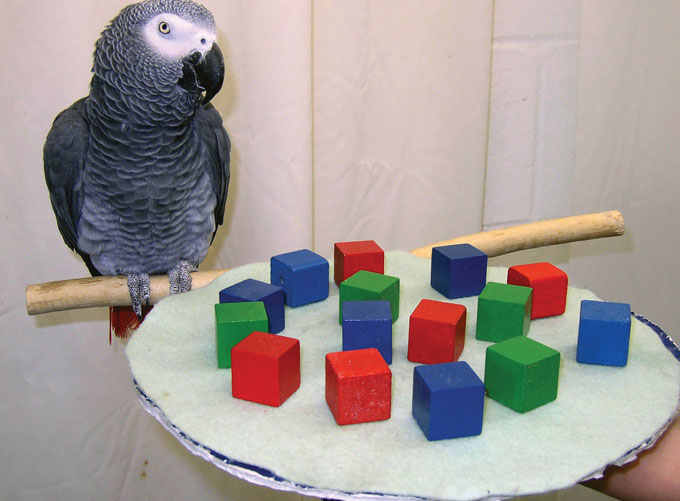
A talking parrot can’t tell you what it thinks or why it behaves some way, Pepperberg notes. “But because you can [train them to communicate], you can ask them the same types of questions that you ask young children.”
To test their smarts, Pepperberg might ask her birds to count objects. Other times, they may be tasked with picking the larger of two objects. Pepperberg’s parrots have also learned to make requests. One of her African grays, for instance, can ask for time alone by saying, “Wanna go back.”
Other clues to how birds think come from how they use objects.
Hyacinth macaws crack open nuts using tools. They hold pieces of wood in their beak or foot to keep the food in just the right position. Palm cockatoos craft drumsticks and rock out to attract mates. Goffin’s cockatoos can recognize individual tools as being part of a set, something only humans and chimps are also known to do.
Overall, studies have documented 11 of the nearly 400 parrot species using tools. By scouring YouTube videos, Bastos and her team noted tool use by 17 more species. They plotted these 28 known parrot tool-users onto an evolutionary tree. Based on this work, the team estimates that 11 to 17 percent of parrot species may use tools.
The beauty of a bird brain
Studying parrot brains can also offer clues to their impressive smarts.
A bird’s brain looks nothing like ours. Most primate brains have a cerebral cortex with lots of curves and crinkles. Nerve cells packed within those wrinkles help people think, remember and learn. A bird brain instead looks smooth, Pepperberg notes. That simpler-looking brain long led scientists to think that to have a bird brain was to be stupid.
Pepperberg knew that was wrong.
In the 1980s, she gave talks about parrots’ brainy feats. “But it can’t be happening,” she recalls people saying, because “there’s no cerebral cortex” in those birds.
Then, by the early 2000s, scientists learned that parts of a bird’s brain resemble the neocortex found in mammals. That’s the largest part of the cerebral cortex.
Later work found that compared to mammals, bird forebrains have “a higher total number of neurons for the same amount of skull space,” says Erich Jarvis. Found in the front of the brain, the forebrain helps with complex behaviors. Jarvis studies the genetics of the brain at Rockefeller University in New York City.
Parrot forebrains are very densely packed with neurons. Some species of these birds even have more neurons than such large-brained primates as chimps and orangutans. And those neurons may link up in ways not found in other animals, Jarvis says.
One 2018 study found a major information highway in parrot brains. It connects the front and back of their brains. Front parts involved in complex behaviors send information to the cerebellum. That region at the back of the brain helps with coordination and balance.
This info pathway may play a similar role to one in human brains, says Cristián Gutiérrez-Ibáñez. He works at the University of Alberta in Edmonton, Canada. There, he studies the evolution of those nerve pathways that help animals sense and move.
In people, the cerebellum helps with complex skills. This includes learning to talk or make tools. And as in birds, this part of the brain also gets information from the cerebral cortex.
The evolution of intelligence
To figure out how parrots evolved their braininess, scientists have had to go way back in time.
Today’s birds evolved from a group of small, two-legged meat-eating dinosaurs called theropods. About 66 million years ago, an asteroid impact wiped out all non-bird dinos from the planet. Modern dinosaurs — we call them birds — emerged after this catastrophe. Some rapidly evolved big brains.
That’s what Daniel Ksepka found. At the Bruce Museum in Greenwich, Conn., he studies how birds have evolved. His team analyzed casts made from the skulls of more than 2,000 living bird species, 22 extinct bird species and 12 non-bird dinosaurs.
These showed that dinos and early birds had similar-sized brains, relative to their bodies. By the time of the mass extinction 66 million years ago, both groups were already beginning to form forebrains. Ksepka’s team reported its findings in Current Biology, four years ago.
The asteroid impact triggered rapid changes in the environment. This could have pushed some birds to evolve larger brains quickly, says Ksepka. Parrots and members of the crow family have evolved some of the biggest brains of any bird. And larger brains relative to body size often suggest intelligence.
The ancestors of parrots probably had large brains that helped them overcome challenges in their environment. After the asteroid impact, this would have allowed them to outcompete other animals for resources. Birds that learn how to open pinecones with their beaks, for instance, are more likely to survive than those that wait for a crop of berries that might never come, Ksepka explains.
Birds of a feather
Today, having a big brain is just one thing that people and parrots share. They also both live long lives, mate for life and learn from others how to sing or talk. This ability to learn and repeat different sounds is called vocal learning. Researchers are looking at how these traits might have led to intelligence to evolve.
Right now, there are more hypotheses than answers.
Vocal learning and a need for more complex ways to communicate may have paved the way to greater braininess. Parrots “have very large, flexible vocal repertoires,” notes Lucy Aplin. She works at the University of Zurich, in Switzerland, and at Australian National University in Canberra. Her work looks into how different animal behaviors evolved. Parrots, she points out, “can learn new vocalizations throughout their lives.”
Humans don’t know what most parrot calls mean. But some parrots make signature sounds. These seem to declare who they are or what groups they belong to, Aplin says.
Parrots live in large, close-knit groups. So having a good memory and being brainier may help them maintain relationships and climb up the social ladder.
Sulphur-crested cockatoos, for instance, live in groups of hundreds. And their pecking orders don’t seem based solely on appearance or size. That suggests these birds may be able to remember other individuals, Aplin says. That would take lots of brainpower.
Aplin’s team is using MRI scans to explore the possible link between big brains and a parrot’s social life. They hope to find out if brain size — overall, or in specific regions — relate to how social a species is.
Parrots’ ability to maneuver objects with their feet may also relate to how intelligence evolved.
Gutiérrez-Ibáñez and his team viewed online photos and videos to see how different groups of birds handle objects with their feet. When ancient birds evolved to fly, the bones in what was a hand shrank and fused to form wings. This means these early birds couldn’t use hands to catch food or move objects.
Over time, some birds, such as parrots and raptors, came to rely on their feet for these tasks. Such “hand-eye” coordination acts as a stepping stone toward intelligence, Gutiérrez-Ibáñez says. His team reported these findings in the August 2023 Communications Biology.
Consider primates. Using objects as tools can help access tricky food sources. Primates use sticks to crack open nuts or to pull ants out of ant hills. Monkeys and apes with better motor skills tend to have bigger brains, researchers reported in 2016. Good motor skills, Gutiérrez-Ibáñez says, are probably important to understanding an item’s potential use. Big brains can mentally manipulate those objects to figure out what they can do with them.
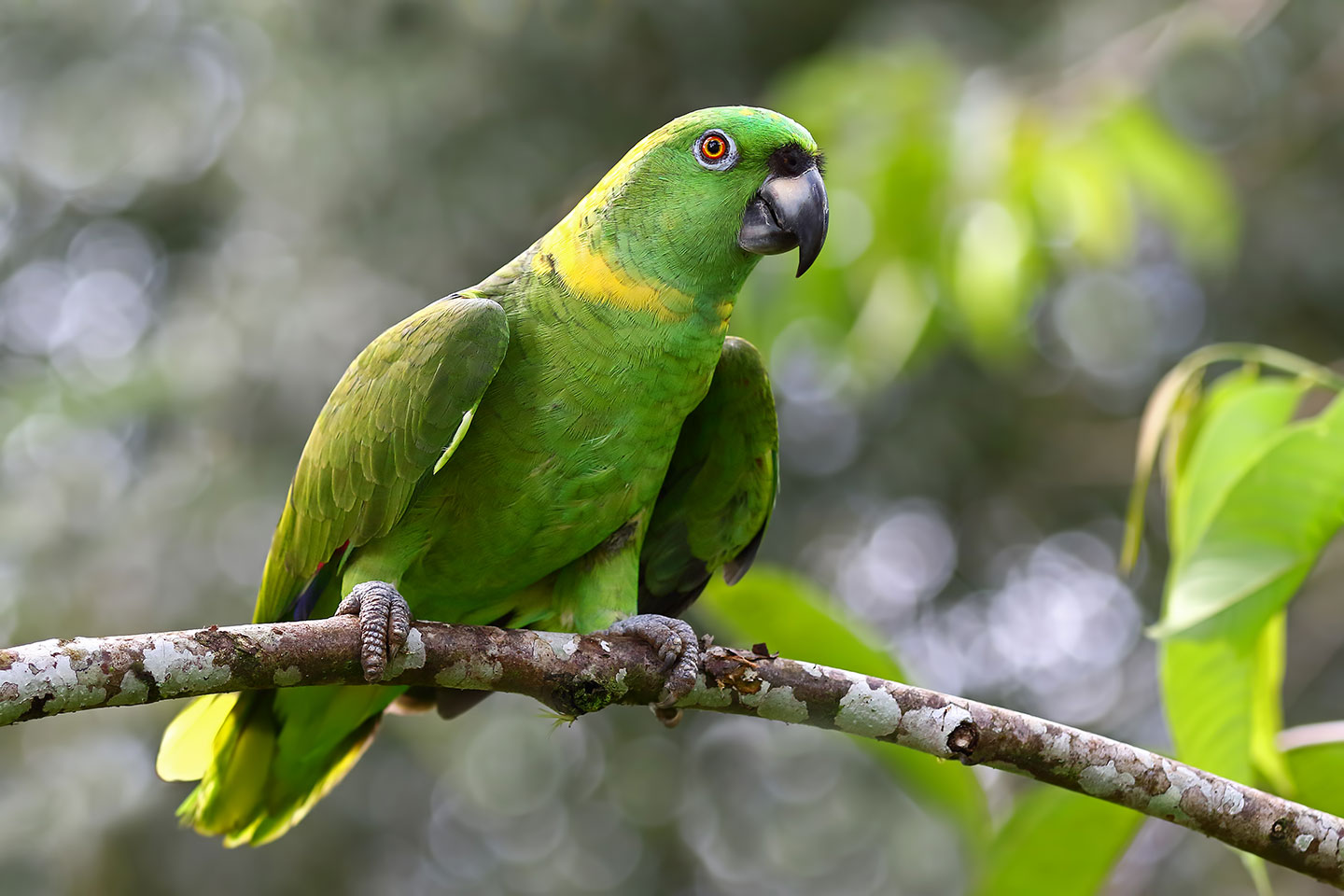
Wild minds
What scientists know about parrot smarts largely comes from those living in captivity. So how parrot braininess plays out in the wild remains mostly unknown. With no predators and plenty of food, captive parrots might learn behaviors they wouldn’t in the wild, Pepperberg says.
It’s also possible that scientists just never see the brainy feats of wild parrots. “Researching these highly mobile animals is a challenge in the wild,” says Rachael Shaw. She studies the behavior of native New Zealand birds at Te Herenga Waka – Victoria University of Wellington.
Alice Auersperg and her team solved that problem by capturing wild Goffin’s cockatoos in Indonesia. This biologist studies the evolution of bird intelligence in Austria at the University of Veterinary Medicine Vienna. Her group placed the captured birds in a field-based aviary. Then they observed how the parrots made sets of wooden tools to get seeds out of sea mangoes.
Some of the birds made up to three types of tools. Each differed in its size, how it was made and how it would be used.
Thick, sturdy tools shaped from entire branches helped wedge apart sea-mango seed casings. The cockatoos made small and medium-sized tools by stripping bark from branches. Tiny and sharp bark fragments let the birds pierce the seed coats. The cockatoos turned to medium-sized tools to remove the seeds from their casings.
Sometimes wild parrots aren’t in forests but in our yards. In Sydney, Australia, sulphur-crested cockatoos teach one another how to break into trash bins for food. To deter this, some people weigh down the lids with bricks or rocks. Others wedge pool noodles, sticks or sneakers through the bins’ back handles. Certain strategies work better than others.
In Singapore, some captive Goffin’s cockatoos have escaped into the city. In short order, the birds grew in number. Seeing how they’ve adapted in real time is “super exciting,” says Theresa Rössler. She works with Auersperg in Vienna, studying tool use in this species. It’s an opportunity to learn how new surroundings might lead to novel problem-solving behaviors.
And that, she points out, is “evolution in the making.”
